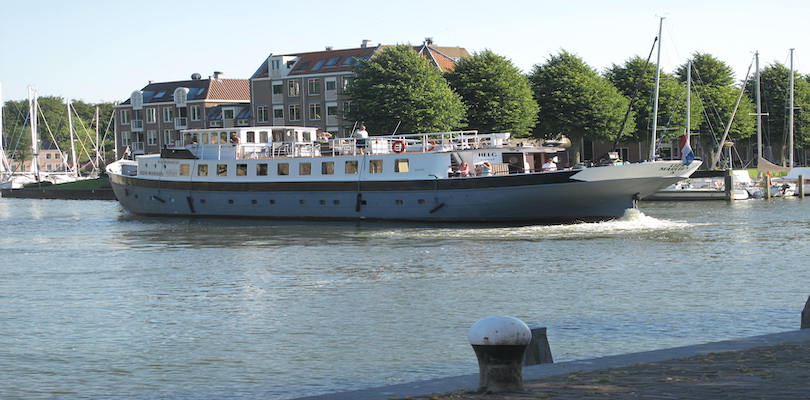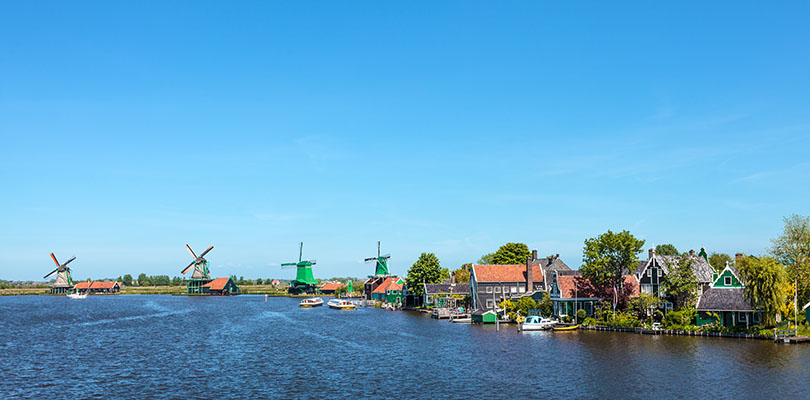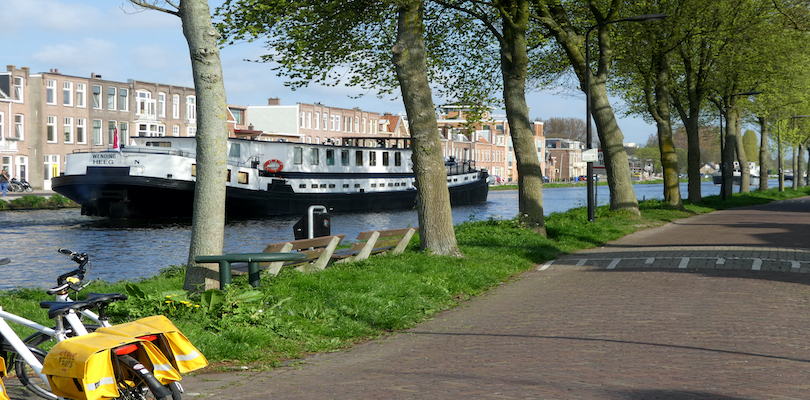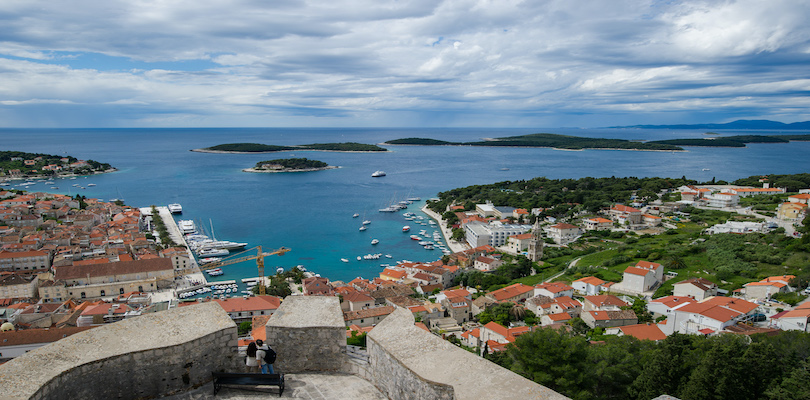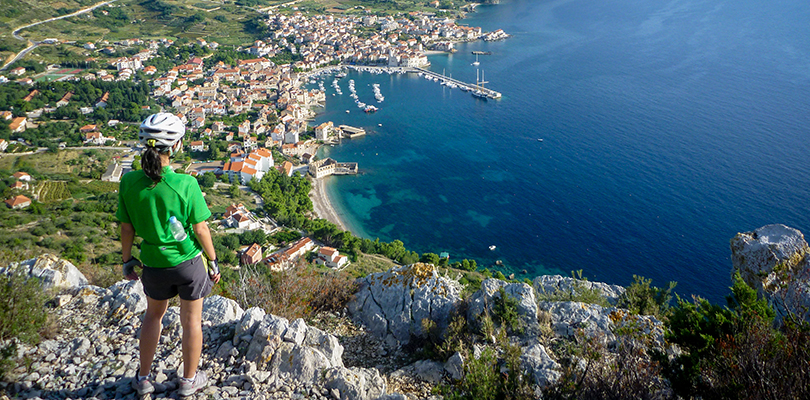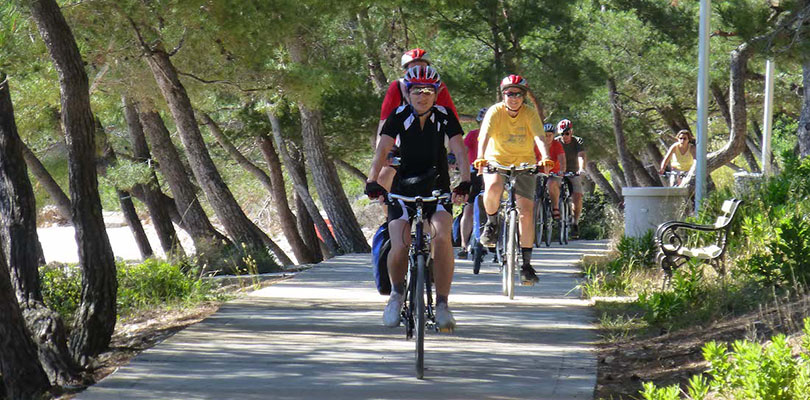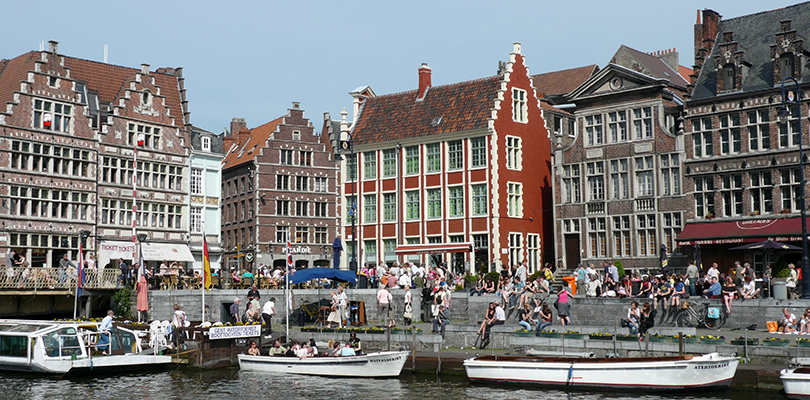The route brings you over small dykes and country roads. Many of the windmills are still in working order. You can get a feel for the old Dutch atmosphere in Enkhuizen, Hoorn and Volendam: traditional costumes, sailing ships and long johns on the clotheslines. If you want to experience what it was to live in one of those villages in the old days we recommend to visit ‘het Zuiderzeemuseum‘ in Enkhuizen. On day 4 you will sail to Texel, an island with thousands of sheep and a magnificent nature reserve. Back on the mainland the route brings you to Holland’s most beautiful dune area. These are also the only kilometers you will be cycling above sea level! Alkmaar will also provide a good picture of ancient times. It is the capital of Dutch cheese with its own cheese market and weigh-house for cheese. In Zaanse Schans, a lovely little hamlet on the banks of the river Zaan, the mills, houses, shops and traditional Dutch crafts bring the past to life.
Saturday: Amsterdam (cycling: ± 15 km)
Boarding between 3 pm and 4 pm. When you arrive on board, you can settle in and enjoy a cup of coffee or tea. It is also a good moment to become acquainted with the tour leader, skipper and crew and of course your fellow passen- gers. Once everyone is ready the tour guide will take you on your first short bike ride around the northern and more quiet part of Amsterdam. During dinner aboard the ship, the program for the next day and the global planning of the week are discussed. Instructions on cycling and safely procedures will also be given.
Sunday: Amsterdam – Hoorn (cycling: ± 45 km)
You now leave Amsterdam, which is still very quiet at this hour. A ferry takes you to the Amsterdam Noord quarter and soon you will be cycling through the rural area of Waterland. In this soggy peat land the houses and villages are hardly above the level of the water. The former isle of Marken is visited. It was not until 1957 that this island was connected to the mainland by a dike and it has retained its own particular character. The inhabitants are the only ones allowed to use their cars, so Marken can only be visited on foot or on bike. The route continues to the historic village of Monnickendam, which received its municipal charter in 1355. Now you continue your way along the Gouwzee dike to Volendam. Originally Volendam was a small fishing community. Practically all its inhabitants used to wear their distinctive and picturesque traditional costumes. Volendam started as a settlement when Edam dug its new, shorter waterway to the Zuiderzee in the 14th century. The old harbour became superfluous, a new dike was built and soon farmers and fishermen settled down. In the second half of the 15th century a new village came into being: Volendam. From Volendam you sail in northerly direction towards the city of Hoorn. During the evening walk you will have the opportunity to get a good impression of this beautiful city with its rich past.
Monday: Hoorn – Enkhuizen (cycling ± 45 km)
You continue on the dike with a wonderful view over the Markermeer on your right and West-Frisian villages on your left-hand side. The recently (1976) built dike from Enkhuizen to Lelystad (in the Noordoostpolder) appears on the horizon. This was meant to be a polder dike for a huge new polder: the Markerwaard. However, the plans were never executed: with time perception changed. The environment and fresh water supply became more important. So today the dike is there, but no polder… The trip for today ends in Enkhuizen, a town which came into existence when two adjoining villages amalgamated. You can end your day with a visit to the Zuiderzeemuseum. This museum, which consists of an indoor and outdoor part, shows you the history of everyday life around the Zuiderzee until the middle of the 20th century.
Tuesday: Enkhuizen – Texel (cycling± 35 km)
The cycling tour starts on the IJsselmeer dike and is then left behind to go through a nature reserve and some typical West Frisian villages. Then Medemblik comes in sight, the oldest city of West-Friesland (1289), with an illustrious past and with Radboud castle, dating from the 13th century. At Medemblik you get on board and sail the IJsselmeer and Wadden Sea to the isle of Texel.
Wednesday: Texel round tour (cycling ± 35 km or 48 km or 62 km)
The isle of Texel, which is one municipality, is the largest of the Dutch Waddeneilanden (Wadden islands). The average length of Texel is 20 km and the average width 8 km. Texel is highly appreciated by bird-watchers. In springtime about 80 different types of birds breed her, mainly in the dune areas, but all in all about 300 different species have been perceived on Texel. A tour around this island with its numerous cycle tracks is well worth the effort. You can choose between round trips of 35, 48 or 62 km. The guide will cycle the 35 km.
Thursday: Texel – Alkmaar (cycling ± 60 km)
The ship takes you back to the mainland, where you disembark in the city of Den Helder, the Dutch naval port, situated at the mouth of the Noord-Hollandskanaal. Today’s route takes you through the dunes. You pass by the unique nature reserve Het Zwanenwater (The Swans’ Water), with its lakes and boggy hollows in the dunes. A little further you cycle on the Hondsbossche Zeewering (Hondsbossche Sea Dike), with a spectacular view of the North Sea. You enter the area of the Schoorlse Duinen (Schoorl Dunes), where you will find the highest dunes in the country. During the last century many pine trees were planted here so now it is a rather woody region. Bergen is an artists’ village which attracts many painters, writers and architects. Your destination for today is Alkmaar, also called the City of Cheese. Its weigh-house was the first in the country (for weighing and trading of cheese).
Friday: Alkmaar – Amsterdam (cycling ± 60 km)
Around the Schermer polder a lot of the original windmills used for pumping out the water are preserved. You will visit the windmills and museum at Schermerhorn and walk around the iconic village de Rijp. The Beemster Polder, dating from the early 17th century, is an exceptional example of reclaimed land in the Netherlands. It has preserved intact its well- ordered landscape of fields, roads, canals, dykes and settlements, laid out in accordance with classical and Renaissance planning principles. This unique features earned Beemster a UNESCO world heritage listing. .Near Zaandam, you will visit the world famous hamlet and open air museum of Zaanse Schans. A unique place where people live and work, with original houses and windmills from the river Zaan area. An extensive network of bicycle paths ensures a relatively easy way back into Amsterdam, showing you some remarkable sites in the centre. Then it is time to say goodbye to your bike. Before the fare-well dinner you may want to go for a walk in town. At night there you may want to take a canal trip or go on a city walk through the centre of the city.
Saturday: Amsterdam
End of the tour after breakfast before 10 Am. If you have an early flight, ask you the tourleader to arrange a taxi to the airport.
Dates/Prices per person
Barge Liza Marleen
|
Cabin type
|
May 8
|
|
Twin cabin
|
€ 1350,00
|
|
Cabin for single use
|
€ 2220,00
|
Barge Wending
|
Cabin type
|
June 5 + 12
|
|
Twin cabin
|
€ 1480,00
|
|
Triple cabin
|
€ 1350,00
|
|
Cabin for single use
|
€ 2220,00
|
Dates
Departure on: May 8; June 5 and 12
